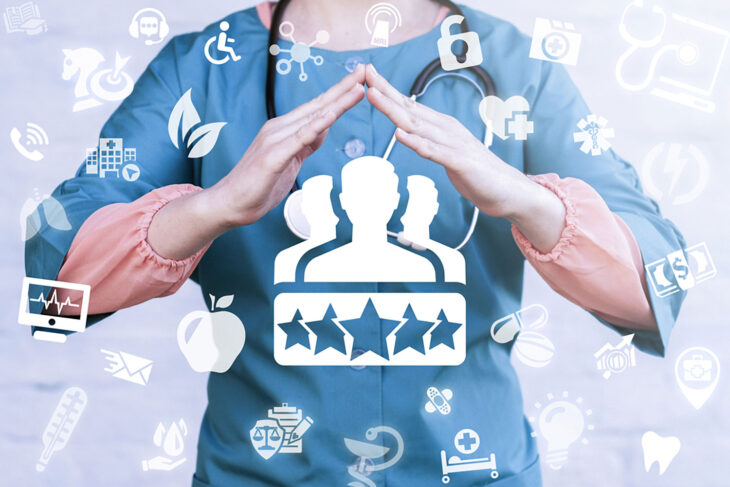The year 2024 has brought daunting challenges for the healthcare industry. Increasing healthcare costs, alterations in patient demographics, new entrants in the market, high customer expectations, and emerging technologies. All these factors reflect a dire need to make innovative changes based on creative ideas.
A thorough study on healthcare trends concludes that the year 2024 can be called the year of higher consumer influence. This means it has become vital to determine ways to enhance access and convenience, decrease costs, and revolutionize health sectors with digital innovations for improved quality and better consumer experience. (Source: Quaintise.com)
We’ve listed down nine creative ideas that can help shape healthcare organizations in 2024 in a way that caters to continual changes in consumer influence and behavior.
Contents
- 1. The Power of “Big Data” in Healthcare
- 2. Work on Personalizing the Healthcare Experience
- 3. Introducing Wearable Healthcare Devices
- 4. AI Computing
- 5. Helping Patients with Virtual Reality (VR)
- 6. Personalized Medicines
- 7. Predictive Analysis in Healthcare
- 8. Real-time Digital Interactions
- 9. Improving Digital Health Records with Blockchain
1. The Power of “Big Data” in Healthcare
One of the significant parts of the health sector is studying big data that collect consumer information from various sources like financial transactions, online transactions, social media, and e-commerce. Big data throws light on future patterns and trends and offers numerous benefits to healthcare organizations. These include:
- Fewer medication errors – using patient records, the software identifies variations between drug prescriptions and the patient’s illness, thus avoiding any probable medication error.
- Better preventive care – analysis of big data aids in recognizing recurring patients in the emergency ward. It allows you to take preventive measures that lower the chances of their return.
- Effective staffing policies – through big data analysis, healthcare organizations can make estimations for new admission rates. This promotes the effective allocation of staff and other resources to handle patients.
All the benefits mentioned above clearly emphasize studying big data and drafting a personalized healthcare plan to cater to any potential problems beforehand.

Source: pointsgroup
2. Work on Personalizing the Healthcare Experience
Changes in consumer-patient behavior in the year 2024 are inevitable. Therefore, healthcare organizations need to work on establishing trust in consumer-patient relationships. This means that they should focus not only on diagnosis and treatment but also remove communication barriers while prioritizing respect and promoting personal interactions.
Medical facilities should be accessible to all, and the environment must be user-friendly. The personalization of the healthcare experience also involves using data to determine a patient’s preferences. Developing a culture that creates satisfied patients begins with engaged employees. Thus, promoting in-patient culture programs is definitely a good idea for better healthcare experience.
3. Introducing Wearable Healthcare Devices
One of the best ideas for a healthcare organization is using wearable medical devices to collect data. People are increasingly concerned about their health. Instead of getting a full medical checkup once a year, they are now focused on maintaining their health throughout. Therefore, investment in wearable devices can benefit healthcare organization in the following ways:
- Personalization of the healthcare experience
- Advanced monitoring system for high-risk patients
- Insurance pricing becomes easy as an individual’s risk of getting ill is calculated accurately
- It offers insurance incentives to patients taking preventive actions for health improvement
- It offers gamification opportunities

Source: digitalrepublik
4. AI Computing
The reliability of AI computing is increasing day by day. Soon, computers may make an accurate diagnosis and determine the treatment of diseases. Today, the healthcare industry has already introduced AI applications in scanning techniques and operations. It is also good to use AI for picturing diagnosis in pathology, genetics, labs, and various other healthcare departments.
Other benefits that AI can offer to healthcare organizations include:
- Automation, leading to high workforce productivity
- Optimization in clinical operation
- Eradicating needless interventions
- Proper analysis of pathology images indicating cancers that can be studied thoroughly, so that best cancer treatments can be suggested
5. Helping Patients with Virtual Reality (VR)
There are situations where patients are difficult to handle and are over-stressed; for instance, the process of childbirth, or experiencing anxiety before surgery. In such cases, patients can be offered with VR glasses for pain management and minimizing stress.
This makes the patient’s experience pleasant and enjoyable. Healthcare providers are also provided with a better and peaceful environment to perform medical procedures and obtain the desired results.
Investment in VR technology also helps organizations collect new patients’ data and convey instructions for treatment after the patients have left. VR headsets help motivate individuals to work out and make it easy for autistic children to learn new things.

Source: Marcum LLP
6. Personalized Medicines
One of the latest trends prevailing in 2024 in the healthcare sector is the use of personalized medicines prepared to cater to individual needs, lifestyle, and genetic makeup of every patient.
It is an accepted fact that each medicine affects differently to different patients. Therefore, understanding how variations in genetics alter the individual response to drugs is extremely important.
The best way to address the issue is to conduct genetic tests for making careful treatment decisions. This idea works great as super-effective medicines are prescribed to patients in the early stage of a disease, with minimum side-effects and at low-costs. Thus, personalized medicine has replaced the ‘trial-and-error’ method and promises a successful cure.
7. Predictive Analysis in Healthcare
Information obtained using Big Data can predict what type of diseases can become problematic in the years to come. In this regard, Big Data sources help healthcare organizations to plan and offer recommendations to patients to lead a healthy lifestyle.
Hence, predictive analysis has become vital for the healthcare sector. It allows professionals to make preparations in advance for any outbreak or make important decisions, like hiring additional staff in emergency situations.

Source: ualrpublicradio
8. Real-time Digital Interactions
Real-time online interactions are also one of the important needs of the healthcare industry. The best idea to connect with doctors online is by using 5G technology. The prompt and fast web connections enabled by 5G allow healthcare providers to treat patients remotely with the help of computers or cell phones. Patients can take online appointments through online interactions. This makes patients more confident to share their problems, irrespective of the fact that a machine is controlling the whole process. Other benefits offered by real-time interaction through 5G include:
- Increased convenience for patients
- Availability of effective medical consultations remotely, via telehealth and telemedicine
- No frequent physical visits to doctors
9. Improving Digital Health Records with Blockchain
In 2024, blockchain technology can play a significant role in the healthcare organization. It can help maintain electronic health records, accurately and safely. Blockchain can be defined as a computerized database or digital ledger for recording transactions. It is an efficient tool for avoiding data breaches, maximizing data accuracy, and reducing costs.

Source: healthcarereformmagazine
Conclusion
Electronic health records that involve all the important information of patients can be organized with blockchain technology and are free from huge errors like misdiagnosis, duplicate records, delayed treatments, etc. Thus, investment in blockchain technology can definitely help a lot in data management and security.
